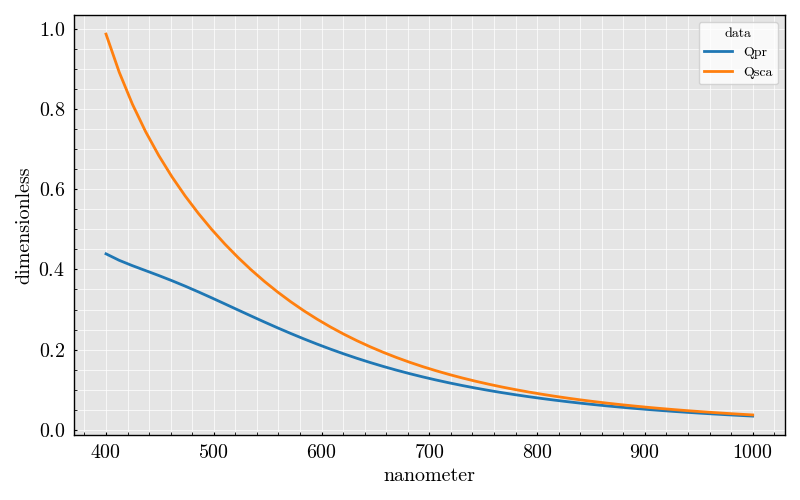Note
Go to the end to download the full example code.
Sphere: Qsca vs wavelength#
Importing the package dependencies: numpy, PyMieSim
import numpy as np
from TypedUnit import ureg
from PyMieSim.experiment.scatterer import Sphere
from PyMieSim.experiment.source import Gaussian
from PyMieSim.experiment import Setup
from PyOptik import MaterialBank
Defining the source to be employed.
source = Gaussian(
wavelength=np.linspace(400, 1000, 50) * ureg.nanometer,
polarization=0 * ureg.degree,
optical_power=1e-3 * ureg.watt,
NA=0.2 * ureg.AU,
)
Defining the ranging parameters for the scatterer distribution
scatterer = Sphere(
diameter=[200] * ureg.nanometer,
property=MaterialBank.BK7,
medium_property=1 * ureg.RIU,
source=source,
)
Defining the experiment setup
experiment = Setup(scatterer=scatterer, source=source)
Measuring the properties
dataframe = experiment.get("Qsca", "Qpr", scale_unit=True)
Plotting the results
dataframe.plot(x="source:wavelength")

<Figure size 800x500 with 1 Axes>
Total running time of the script: (0 minutes 0.203 seconds)
